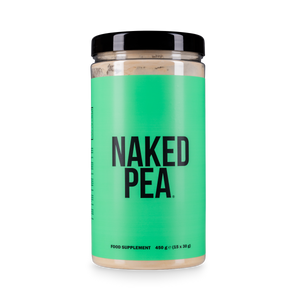Protein absorption is a hot topic among athletes and fitness enthusiasts. To reach fitness goals, it’s important to understand how to best fuel your body.
Many people wonder how much protein they should consume as well as the best sources of protein to maximize their body’s absorption of protein.
Key Takeaways About Protein Absorption:
-
Protein absorption refers to the process of breaking down protein into amino acids which are then absorbed through the lining of the small intestine and into the bloodstream.
-
To maximize muscle protein synthesis, it’s best to spread protein intake out throughout the day and consume sources of protein that have high absorption rates.
-
Research suggests that consuming 20-30 grams of protein at one sitting is best to optimize muscle protein synthesis, and extra protein may offer no additional benefit.
- The rate of protein absorption can vary between individuals depending on age, activity level, differences in digestion and metabolism, and protein source.
The Science: How Does Protein Absorption Work?
Protein is a necessary macronutrient for the human body as it plays a critical role in many physiological processes.
Once protein is consumed it goes through the process of digestion and absorption where it is then broken down to amino acids, which are utilized throughout the body.
This article will explore the science behind protein absorption and explain details about this process.
Chewing and Digestion

Protein digestion and absorption begins in the mouth. Chewing breaks food down into smaller pieces, which increases the surface area for digestive enzymes to work.
Once the food reaches the stomach, hydrochloric acid and the enzyme pepsin further break down the food.
Next, in the small intestine, most of the protein absorption occurs. Protease enzymes are released from the pancreas and enter the small intestine to break down protein into its basic building blocks, amino acids.
The amino acids are absorbed through the small intestine lining and enter the bloodstream where they are distributed throughout the body.
Absorption, Oxidation, and Liver Regulation
After amino acids are absorbed through the small intestine, they are transported by the bloodstream to tissues and organs. But first, all amino acids must pass through the liver.
The liver is a central hub for amino acid metabolism, as it regulates how and where they are distributed. Amino acids can be utilized for protein synthesis, energy production, or other metabolic processes.
If the body is in need of energy, some amino acids can be converted to glucose through a process called gluconeogenesis, while others can be utilized for energy right away through a process known as amino acid oxidation.
If amino acids aren’t needed, they can get converted to glycogen and are stored in the liver for later use.
Muscle Protein Synthesis and Amino Acids

Muscle protein synthesis is the process in which the body creates new muscle proteins. Amino acids are necessary to stimulate this process.
Consuming high-quality protein that contains all essential amino acids is necessary to optimize the muscle protein synthesis process. Additionally, timing protein intake around exercise can also optimize muscle protein synthesis.
Focusing on consuming foods and supplements rich in high-quality protein is necessary to optimize muscle growth and recovery.
Protein Intake: How Much With Each Meal?

There is no one-size-fits all approach when determining how much protein you should have with each meal. The optimal protein intake at each meal depends on age, weight, physical activity level, and fitness goals.
If someone needs 64 grams of protein daily, it would be best for them to distribute their protein intake throughout the day, aiming for about 20-25 grams at each meal.
Everyone’s protein needs will be different, but keep in mind that it’s best practice to evenly distribute intake throughout the day for optimal absorption and utilization.
One trick is to drink a protein shake before and after your workouts to increase daily intake.
What is the Anabolic Ceiling: Is it Real?
The anabolic ceiling is a concept that suggests there is a limit to how much protein the body can absorb and utilize at one time. This suggests that consuming protein beyond what the body can make us of does not provide any additional benefit.
However, some research suggests that the anabolic ceiling may be actually higher than initially thought.
Before delving into how much protein is ideal to consume at one sitting, it’s important to distinguish protein absorption vs utilization.
Protein absorption refers to the process in which amino acids are absorbed through the small intestine and into the bloodstream.
This process is essentially unlimited and the body can continue to digest and absorb protein. However, there is a limit to how much protein can actually be utilized for muscle protein synthesis at one time.
The most updated research suggests that bodies can effectively make use of up to 40 grams of protein at one sitting, which is higher than the 30 grams per sitting that was previously thought (1).
While not everyone may benefit from 40 grams of protein at once, some people can efficiently utilize this high dose of protein to optimize muscle protein synthesis, especially after a tough workout.
How Much Protein Should You Consume Each Day?

The general recommendation for healthy adults is to consume 0.8 grams of protein per kilogram of body weight daily.
Some people require more protein than the general recommendation. Athletes and those with higher energy expenditures can require up to 2.2 grams of protein per kilogram of body weight daily to support muscle repair, recovery, and growth (2).
Older adults may have higher protein needs, at about 1-1.2 grams of protein per kilogram of body weight, to support age-related muscle loss.
Keep in mind that these are general recommendations and individual needs will vary. You can obtain more accurate and personalized results from using an online protein needs calculator or by consulting with a Registered Dietitian to provide personalized recommendations.
How Much Protein Can Your Body Absorb in One Hour?
There are individual differences in the rate of protein absorption, which is why it’s challenging to determine an exact limit. However, it is evident that the body continues to absorb and use protein over several hours.
Protein is absorbed gradually as it’is broken down into amino acids, absorbed through the lining of the small intestine, and then into the bloodstream.
The rate at which absorption occurs will depend on individual metabolic differences, the protein source, and the presence of other nutrients.
To most efficiently absorb and utilize protein, spread protein intake out throughout the day rather than consuming a hefty dose in one sitting.
Protein Absorption Rate Chart
The following chart will outline the rate of protein absorption for a variety of different protein sources.
|
Protein Source |
Rate of Absorption (g/hr) |
Absorption time (hrs) per approximate serving |
|
Whey protein isolate |
20 |
|
|
Whey protein concentrate |
10 |
2 |
|
Casein protein |
3 |
6-7 |
|
Pea protein |
5-7 |
|
|
Egg (cooked) |
3 |
|
|
Egg (raw) |
1 |
20 |
|
Chicken |
5-7 |
3-4 |
|
Beef |
2-3 |
7-10 |
|
Fish |
7 |
3 |
|
Shellfish |
7 |
3 |
|
Tofu |
4 |
5 |
|
Cow’s Milk |
3.5 |
2-2.5 |
|
Soy Milk |
4 |
2 |
Please note the above chart outlines approximate values based on a combination of research studies and clinically appropriate estimations given the type of protein, its bioavailability, and digestibility.
There are also factors that can alter rate of absorption such as age, genetics, metabolic function, and any pre-existing conditions that may impact the rate of digestion.
----------------------------
One serving of protein equals approximately 20 grams of protein (for whey, casein, or pea protein), 3oz of chicken, beef, fish, or shellfish, or 1 cup of cow’s milk or soy milk.
FAQs About Protein Absorption

The following section will explain the answers to some of the most frequently asked questions about protein absorption.
Which Protein Has the Highest Absorption Rate?
Different protein sources will be digested, absorbed, and utilized at different rates. Research studies continue to suggest that whey protein has one of the highest absorption rates.
This is likely explained by the high concentration of amino acids and the fact that hydrolyzed whey protein is already partially broken down, meaning that there is less work for the body to do.
The rapid absorption of whey is one of the reasons that it’s commonly used as a post-workout protein source as it can efficiently stimulate muscle protein synthesis.
If you’re looking for a high-quality hydrolyzed whey protein source, Naked Whey is a healthy, all-natural protein source with no artificial ingredients.
How Much Protein Do You Absorb in a Day?

The total amount of protein that the body absorbs in a day depends on the individual's protein intake and the speed of their metabolism.
If we’re purely talking about absorption, there is not a limit to how much protein can be absorbed by the small intestine. However, once the amino acids enter the bloodstream, all of these amino acids will not be utilized for muscle protein synthesis.
Most people can absorb and utilize 20-30 grams of protein at one sitting. For example, if someone consumed 30 grams of protein at six different times throughout the day, theoretically they could absorb 180 grams of protein.
After the body has maxed out on its ability to incorporate amino acids into muscles, the remaining amino acids will be utilized for other roles where protein is needed.
Or, the amino acids can be converted to glucose or stored as glycogen.
Can the Body Absorb More Than 30g of Protein?
It’s a common misconception that the body cannot absorb more than 30 grams of protein at one sitting.
However, keep in mind that absorption simply refers to the body’s ability to take in broken down protein – or amino acids – into the bloodstream via the lining of the small intestine.
This absorption through the small intestine will continue to occur as long as there is a source of protein available.
However, when it comes to utilization, newer studies suggest that some people may be able to extend use up to 40 grams of protein at one sitting, but this would depend on individual digestion, metabolism, and activity level.
Also read: How Much Whey Protein Per Day?











